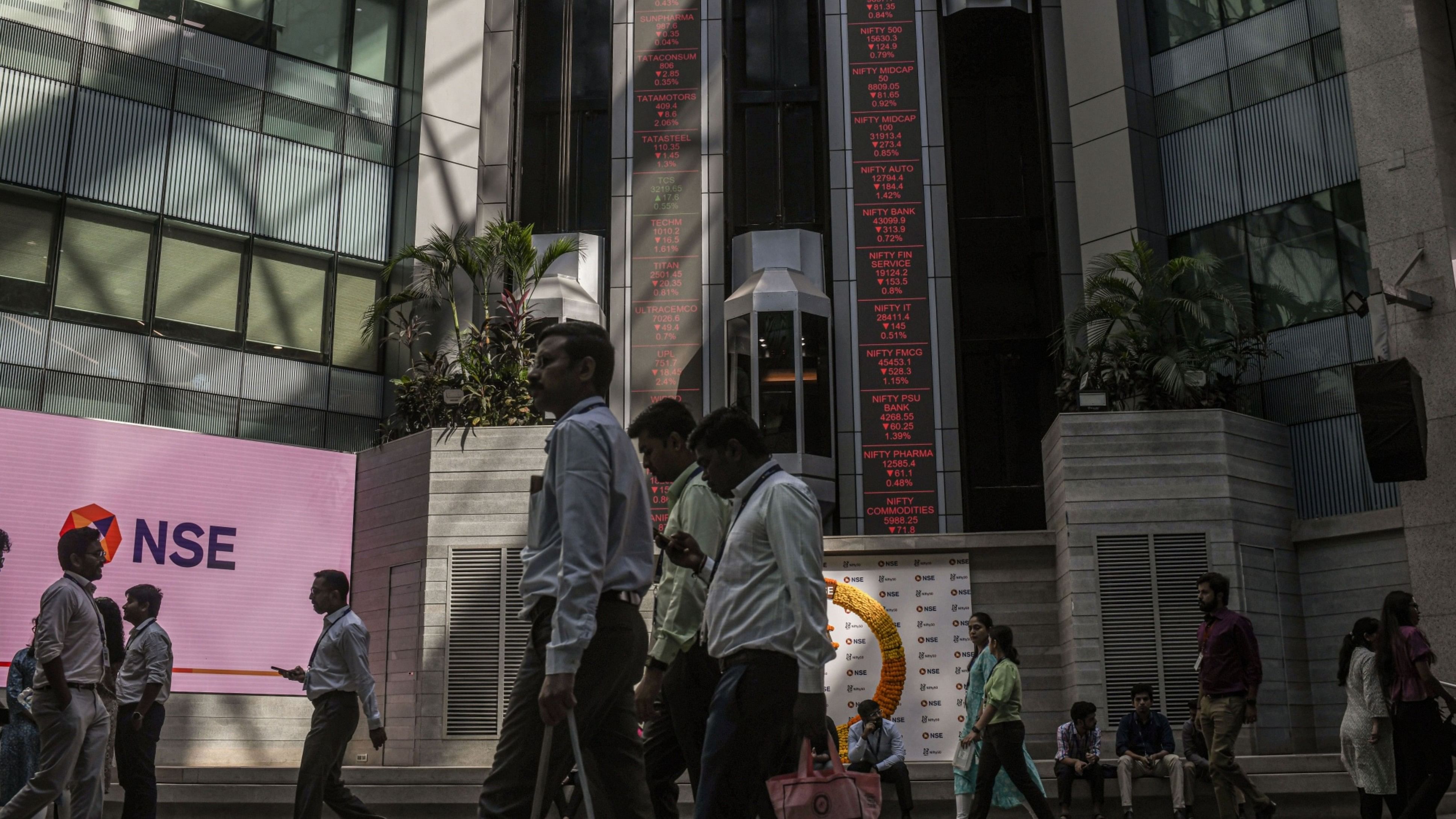
India’s stock market hit an all-time high valuation of $3.8 trillion this week, a perfectly timed billboard for Modi as the G20 summit gives him another opportunity to showcase the nation’s potential as a geopolitical juggernaut.
Credit: Bloomberg Photo
A record stock-market valuation and surging foreign inflows make for a great backdrop as Prime Minister Narendra Modi looks to tout India’s growing prominence to world leaders at this weekend’s Group of 20 summit in New Delhi.
Boosted by one of the world’s fastest growing economies, solid corporate earnings and an unprecedented retail investing boom, the nation’s equity benchmark is also approaching an all-time high.
The milestones are a stark contrast to many emerging-market peers, not least to neighboring China, whose economic woes and struggling financial markets have become a source of frustration for global investors. In fact, troubles at its biggest EM rival have only burnished India’s appeal. Developing-market money managers are now most overweight on India in their Asia portfolios as a “safe place to hide,” while China ranks among their largest underweights, Goldman Sachs Group Inc. analysts wrote in a report earlier this month.
“Strong domestic growth prospects, ongoing policy reforms as well as robust credit growth are tailwinds contributing to the outperformance of Indian equities,” said Audrey Goh, investment strategist at Standard Chartered Bank SG Ltd. “The shift to a multi-polar world would also likely benefit India,” with the government moving to make doing business in India more attractive.
India’s stock market hit an all-time high valuation of $3.8 trillion this week, a perfectly timed billboard for Modi as the G20 summit gives him another opportunity to showcase the nation’s potential as a geopolitical juggernaut. With the West looking to curb China’s influence, Modi has rolled out a mix of tariffs and incentives to lure companies to make in India and firms including Apple Inc. and Samsung Electronics Co. are among those expanding production in the nation.
Credit: Bloomberg
Foreign investors have bought more than $16 billion worth of Indian stocks on a net basis so far in 2023, set to be the biggest inflow in three years. The nation stood out in August, when overseas funds sold shares in almost every other Asian emerging market amid a global selloff. Onshore Chinese stocks saw a record outflow last month as Beijing’s attempts to restore market confidence fell flat with investors amid persistent worries over a property crisis.
“My favorite market in Asia remains India,” Chris Wood, the global head of equity strategy at Jefferies LLC, said in a Bloomberg Television interview this week. Wood described India as the “market I want to be in Asia for the next 10 years,” foreseeing strong growth in corporate earnings led by a rejuvenating private investment and real estate cycle.
Having nearly tripled its value since the pandemic low for global equities in March 2020, India is now the world’s fifth-largest stock market, data compiled by Bloomberg show. The US has seen its market capitalization about double in the period.
Milan-based Generali Investments is bullish on India for its economic growth and earnings outlook, according to Michele Morganti, the firm’s senior equity strategist. Generali reduced its overweight on China last month as policymakers opt for limited measures to help companies and boost sentiment over an all-out stimulus plan, he said.
Credit: Bloomberg
To be sure, there are several risks on the horizon for India.
Resurgent crude oil prices threaten to worsen inflation dynamics for the central bank, which is already troubled by a surge in prices of everyday items from tomatoes to onions. India’s rupee meanwhile is hovering near a record low.
Investors have to navigate a general election in April-May that some strategists say has the potential to swing markets. In the longer term, market watchers will also closely scrutinize India’s ability to build fast and adequate infrastructure, lift education standards and create enough jobs for a burgeoning young population amid a rising threat from the increased use of artificial intelligence.
Aperture Investors ranks among the holdouts that aren’t boosting exposure. India needs years of improvements in its infrastructure and private-sector buildout before it can replace China in portfolios, said Peter Marber, the New York-based head of emerging markets at the firm.
“Just because financial investors are retreating from Chinese stocks and bonds doesn’t lead to a complete shift to India,” Marber said. “There aren’t nearly the number of investable companies and assets in India versus in China.”
Credit: Bloomberg
For now though, markets are looking at the positives. The NSE Nifty 50 Index has jumped almost 6 per cent in dollar terms over the past three months, beating the broader MSCI Emerging Markets Index by more than 7 percentage points.
India is one of the biggest equity overweights at Columbia Threadneedle Investments, which also expects countries including Indonesia, Mexico and Poland to benefit from the near-shoring boom as the US relocates supply chains away from China. The money manager is also bullish on Indian local-currency government bonds and dollar corporate debt as well as the rupee.
“On a relative basis, India could be the biggest winner,” said Gordon Bowers, a London-based analyst at the firm.